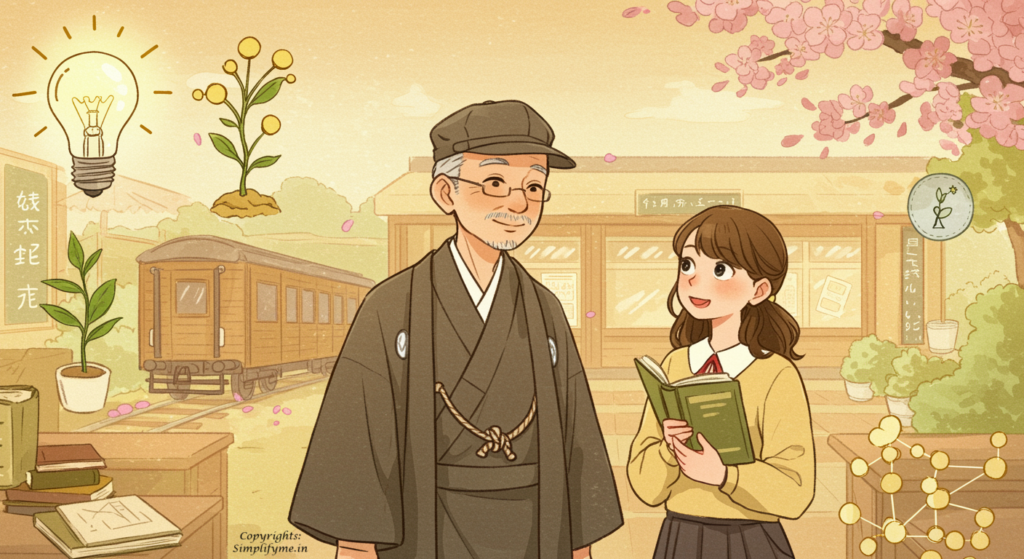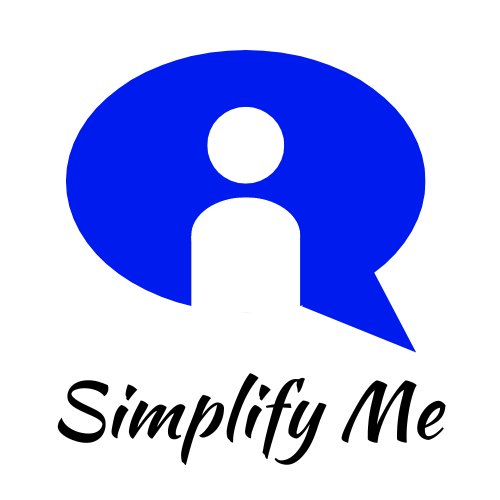
A couple of weeks ago, my daughter and her friends were discussing Sabrina Carpenter’s world tour. They inadvertently came to the topic of how unimportant calculus is in today’s schools. Somehow, I walked in right as they were asking my daughter, “Why do we need to study calculus?” Do they need it to succeed in the actual world?
Although my daughter struggled to provide reasons, she said yes. She trusted me, so I felt compelled to protect her. Thus, I began to outline a few applications as examples. In engineering processes employing differential equations to build bridges, circuits, and machines. After that, I looked into medical imaging (MRI algorithms) and drug dose rates (pharmacokinetics).
The commerce students weren’t persuaded much by my examples. One of them even asked, “Why should I?” None of those things are something I do on a daily basis. After that, I gave her an overview of how economics makes use of calculus. For example, predicting market movements, calculating interest, and optimising investments. No matter how hard I tried, the conversation wouldn’t go the way I wanted it to. I tried to explain something to the girls, but they did not get it. It was at that point that I decided to end our discussion and move from the place.
“You cannot expect everyone to understand at the same speed,” my daughter told me after her friends had gone home. “There is a wide range of speeds among my friends. That is not going to annoy you.”
Introduction to ToTo Chan
That statement got me thinking, and I went and reread a profound book about unconventional teaching from around ten years ago. Toto Chan: The Little Girl at the Window was the name of the book. That book made many good points. The main one was about how various people learn best and how we shouldn’t try to force everyone to be the same. Finally, I dug a bit more to see if there were any important takeaways for future leaders. Presented below are the results of this activity.
Tomoe Gakuen’s headmaster, Sosaku Kobayashi, had a revolutionary leadership style for Japan in the 1930s. Yet it’s surprisingly similar to the most advanced ideas in management and education today. Using only a small number of anecdotes and studies as evidence, let me explain. We will examine how his ideas apply to contemporary classrooms, businesses, and organisational cultures.
Lesson #1: Individuality Over Conformity
Totto-Chan was expelled from her first school for being “too disruptive.” At Tomoe, Kobayashi saw her curiosity as a gift, not a flaw. Most of the lessons in that school were tailored to each child’s pace and interests (e.g., letting kids start the day with their favourite subject).
How is this being done in today’s corporate world?
- Google’s “20% Time”: Employees are allowed to spend 20% of work hours on passion projects (like Gmail and AdSense). Results? Innovation thrives when individuality is honoured.
- Neurodiversity Hiring: Companies like Microsoft and SAP actively recruit autistic employees for their unique problem-solving skills
Can this be found in education? Why not:
- Montessori & Democratic Schools: student-led learning, mixed-age classrooms, and no standardised testing—echoing Tomoe’s philosophy.
- Personalised Learning Tech: AI-driven platforms (like Khan Academy) adapt to each student’s level, just like Kobayashi’s flexible curriculum.
Will it work in today’s world?
- Research (Gallup, Deloitte) shows strengths-based teams are 12% more productive.
- A 2023 Harvard study found neurodiverse teams outperform homogeneous ones in innovation.
Lesson #2: “Trust > Control”—The Power of Autonomy in High-Performance Cultures
In Kobayashi’s school, this is what I found:
- Students chose their daily tasks—whether painting, gardening, or math—without rigid schedules.
- No punishments; mistakes were seen as learning opportunities.
The inner lesson that I got was that mistakes do happen. As leaders, we need to teach how to use the mistake as a learning opportunity rather than take punitive actions for non-conformity.
At the workplace today:
- Netflix’s “No Vacation Policy”: Employees take time off whenever they need—result? Higher productivity and retention.
- Remote Work & Results-Only Work Environments (ROWE): Companies like GitLab measure output, not hours, leading to 30% higher engagement (Gartner report).
In education:
- Finland’s School Model: minimal homework, student autonomy, and teacher trust—ranked among the world’s best education systems.
- Agile Classrooms: Teachers act as “coaches,” letting students set weekly goals (similar to Scrum methodology).
Real-life data: A 2022 MIT study found that autonomy boosts motivation more than financial incentives. Gallup reports teams with high trust show 50% higher turnover.
Lesson #3: “Leadership is all about active listening”—Psychological Safety & Inclusive Decision-Making
What did Kobayashi do differently than most of us as leaders/managers do today?
- He listened to Totto-Chan for four hours straight without interrupting—making her feel valued.
- Students were encouraged to speak freely, even about fears (e.g., the boy who couldn’t climb the tree).
At workplaces today, things are changing. Active listening is getting into the team’s culture:
- Amazon’s “Silent Meetings”: Documents are read first, ensuring everyone’s voice is heard (not just the loudest).
- Google’s Project Aristotle: Found psychological safety (where people feel safe to speak up) was the #1 factor in high-performing teams.
In education:
- Restorative Justice in Schools: Replacing punitive discipline with dialogue reduces suspensions by 40% (a Stanford study).
- Student-Led Conferences: Kids lead parent-teacher meetings, fostering agency (used in Int’l Baccalaureate schools).
Is it possible to get this atmosphere into reality in a few sampled environments?
- Teams with high psychological safety are “76% more engaged” (Harvard Business Review).
- Employees who feel heard are 4.6x more likely to perform their best (Salesforce research).
Lesson #4: “Joy as a Catalyst for Excellence”—The role of Play & Creativity
Joy and workplace are today only found in figurative speech. Technology and automation are making the workforce duller and more frustrated. Can we get joy back into the team’s culture? Kobayashi seemed to have found that it is possible and the best medicine for today’s world. What did he do differently?
- Classes were held in train cars; lunchtime was a scavenger hunt (“Something from the ocean and something from the hills”).
- Music and movement were integral to learning.
Examples in today’s corporate world:
- LinkedIn’s “InDay”: One Friday a month is dedicated to creativity, volunteering, or learning.
- Gamification at Salesforce: badges and leader boards make training engaging, increasing completion rates by 50%.
In schools?
- Maker Spaces in Schools: Hands-on labs where kids build robots, sew, or code—learning through play.
- Outdoor “Forest Schools” (Popular in Scandinavia): Kids learn math by counting pinecones and science by observing bugs.
Can it be made possible? Any data to supplement the above point?
- A 2023 study in Nature found playful learning boosts memory retention by 65%.
- Companies with high creativity scores outperform peers by 2.3x (Adobe).
Lesson #5: “Legacy Beyond Structures”—Sustainable Leadership in a Changing World.
Kobayashi always stressed passing on learning of yours to the next in line. Tomoe was bombed in WWII, but its alumni (like Totto-Chan) carried its values into adulthood. Good things will come to an end if not passed. Hence, sustainability is the need of the hour, especially in leadership. Most HR and corporations have a policy named “Next-in-Line Leaders” development programs. The question still remains: are they sustainable?
Let us see for real:
- Patagonia’s “Earth-First” Culture: Even after its founder stepped down, employees uphold environmental activism.
- Zappos’ holacracy experiment: Though flawed, it proved that distributed leadership can outlast a single leader.
In Schools: I was not able to find suitable data, but it is a little difficult to get this kind of data from schools. We cannot build teachers; they have to be found and nurtured.
Is sustainability as a KPI possible? Of course, why not:
- 73% of employees say company values matter more than salary (McKinsey).
- Schools with strong cultures (like High Tech High) maintain excellence despite budget cuts.
As a rap around of the key data from this blog. Let me give it out as a table.
| Tomoe Gakuen’s Principle | Modern Equivalent | Outcome |
| Personalised Attention | AI-driven personalized learning / Strengths-based management | Higher Engagement in the activity |
| Freedom within the structure | Agile sprints/ROWE policies | Faster Innovations |
| Listening deeply | Psychological safety/silent meetings | Better decisions (unbiased) |
| Learning through Joy | Gamification/Maker space | Increased retention |
| Values over Rules | Mission-driven companies (e.g., Patagonia) | Long-term loyalty |
Actionable Takeaway: Whether you’re a CEO, teacher, or team leader, start to ask:
- “How can I give more trust than control?”
- “Where can I replace punishment with curiosity?”
- “When did I last listen—truly listen—to my team or students?”
Kobayashi’s legacy proves that human-centric leadership isn’t just being kind; it’s the most effective way to build resilient, innovative organisations.
[I used the help of AI a lot to condense my materials and researches. The original blog was way too big and hence reshaped it as bullet points. Made it easier for someone to copy and make PPT slides]


A great leadership lesson for me from a wonderful book too.